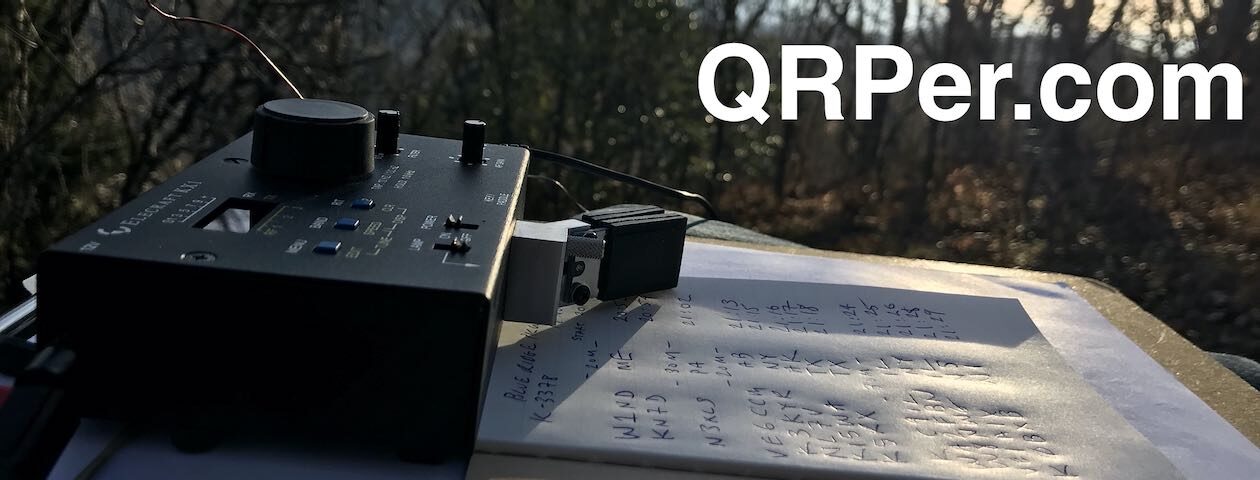
If you own a Xiegu G106, X6100, or any other radio that is prone to overloading when in the presence of an AM broadcaster, you should consider building an in-line BCI filter!
As many of you know, I’ve been testing the Xiegu G106 over the past couple of months for a review that will be published in the May 2023 issue of The Spectrum Monitor magazine.
One criticism of the G106 is that its front-end overloads when there’s an AM broadcaster within a few miles of where you choose to operate. The Xiegu X6100 is identical in this regard.
One quick way to remedy this is to build or buy a BCI filter. We’ve mentioned in the past how you can homebrew them and I planned to do so. After checking my parts drawer, though, I realized I needed to buy a capacitor, toroids and at least one of the two BNC connectors needed if I wanted an in-line filter in a small project box.
 I decided it would be much easier to simply buy a kit and, based on a tip from a reader here on QRPer.com, I purchased one from Dan (K9DP).
I decided it would be much easier to simply buy a kit and, based on a tip from a reader here on QRPer.com, I purchased one from Dan (K9DP).
Assembly photos
I snapped a few photos as I assembled this kit and thought I’d share them just to show how simple and easy this kit is to build.
The kit is contained in this small poly bag. Simply scan the QR Code or go to this page on K9DP.com.

Here are the kit contents:


First, I soldered the BNC connectors to either side of the board:

 Next, I soldered on the three capacitors. Make sure you check the values of the capacitors (per the instructions) before soldering!
Next, I soldered on the three capacitors. Make sure you check the values of the capacitors (per the instructions) before soldering!

Next, I wound the toroids–quite easy to do:

K9DP uses magnetic wire with a low-heat enamel, so it’s actually pretty easy to scrape and clean the ends to solder to the board:

One tip is to twist the ends of the toroid wire to hold them in place as you solder them:

Et voilá! A complete BCI filter:


All that’s left is to apply the heat shrink tubing to protect the board when it’s in your field kit and backpack. K9DP cuts it to length. Follow his instructions for ideal placement:
One of my followers on Mastodon noted that the end result looks a lot like this famous illustration–of an elephant inside a snake–from Le Petit Prince. I have to agree:
This kit maybe took 30 minutes to assemble and that was mainly because I took my time to carefully count the 24 windings on the toroid.
This is a very easy build and a quality kit. Even a beginner can tackle this one with a little patience.
In fact, I think the K9DP BCI filter kit would make for a brilliant club build because it’s affordable ($19.99 shipped), can be built by anyone within an hour, requires basic tools (soldering iron, heat gun, cutters), and is incredibly useful!
Click here to check out the K9DP BCI filter kit.
If you don’t care to assemble the kit (I would encourage you to give it a go!) you can buy the kit pre-assembled and tested for $39.99.
Important note about BCI filter placement
 If you are using a built-in or external ATU with an in-line BCI filter, the BCI filter must be placed between your transceiver and the antenna tuner (ATU); not between the antenna tuner and the antenna!
If you are using a built-in or external ATU with an in-line BCI filter, the BCI filter must be placed between your transceiver and the antenna tuner (ATU); not between the antenna tuner and the antenna!
This means that with radios like the X6100 that have a built-in ATU, you need to use either a resonant antenna (or an antenna like an end-fed half-wave with a matching circuit) and make sure your internal ATU is in bypass mode.
With a radio like the Xiegu G106 that lacks an internal ATU, it’s simple: either use a resonant antenna, or place the BCI filter between the radio and your external ATU.
BCI filters don’t like a high SWR which is why placement is important.










There was a BCB filter project in the ARRL Handbook for years.
Yes, they’re truly a very simple project. Many of us have all of the components in our junk drawers. 🙂
If you dislike winding toroids, the method I show in this video makes it a lot easier!
https://youtu.be/sDIWNHOoNh8
Plus one for the literary reference, from a French teacher!
Thanks for the review! Building kits has become a bit of an addiction for me; these days I’ll choose a kit over a pre-made alternative just because I get to build it.
Elephant inside a snake is great, but mine is even better: a beauty 🙂 https://kg6yj.blogspot.com/2023/05/my-diy-bci-filter-beauty.html
i built my filter in a small diecast box with so239 connectors. i did not like the included bnc connectors. looks better and easier to use.